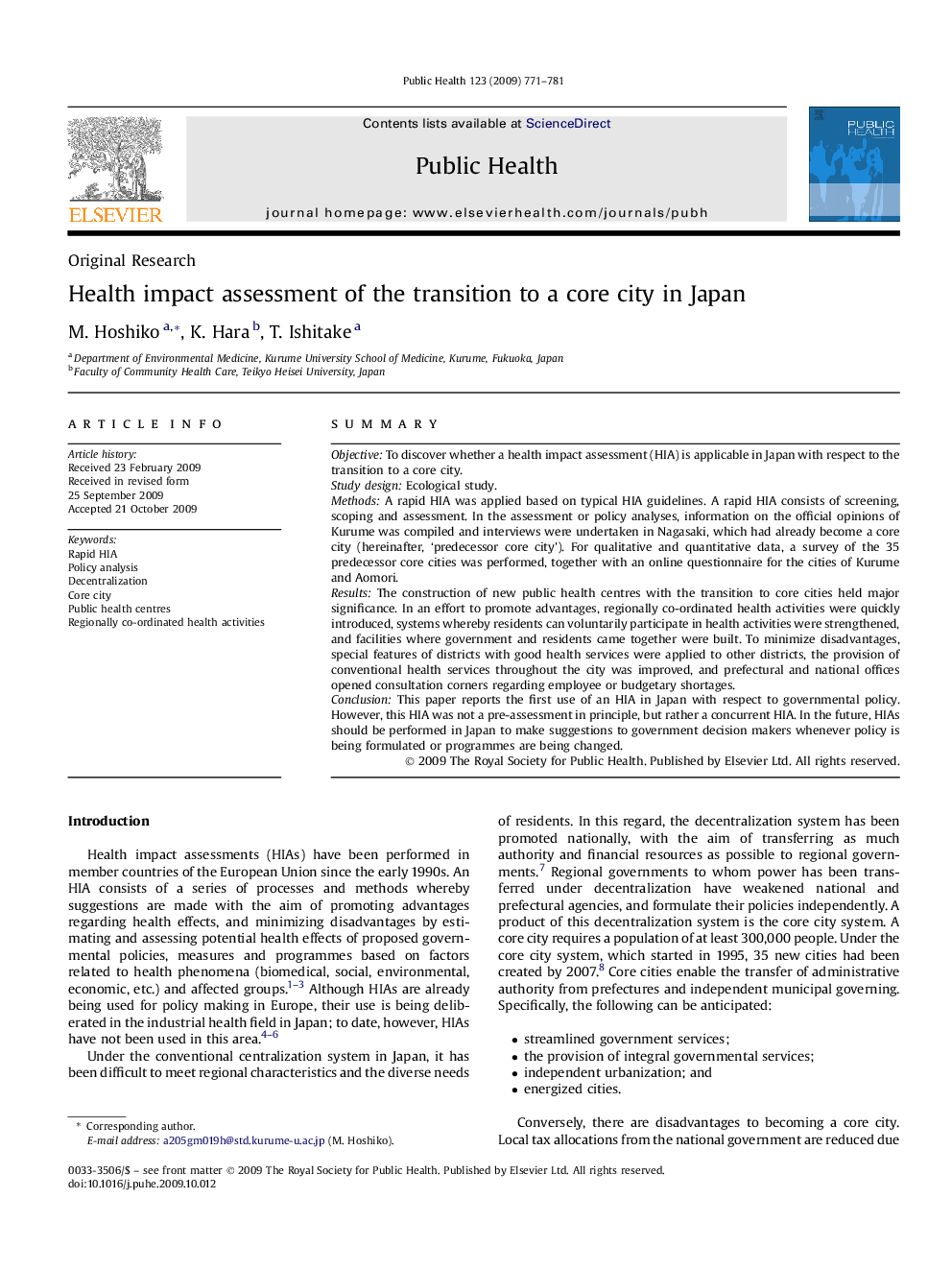| Article ID | Journal | Published Year | Pages | File Type |
|---|---|---|---|---|
| 1088817 | Public Health | 2009 | 11 Pages |
SummaryObjectiveTo discover whether a health impact assessment (HIA) is applicable in Japan with respect to the transition to a core city.Study designEcological study.MethodsA rapid HIA was applied based on typical HIA guidelines. A rapid HIA consists of screening, scoping and assessment. In the assessment or policy analyses, information on the official opinions of Kurume was compiled and interviews were undertaken in Nagasaki, which had already become a core city (hereinafter, ‘predecessor core city'). For qualitative and quantitative data, a survey of the 35 predecessor core cities was performed, together with an online questionnaire for the cities of Kurume and Aomori.ResultsThe construction of new public health centres with the transition to core cities held major significance. In an effort to promote advantages, regionally co-ordinated health activities were quickly introduced, systems whereby residents can voluntarily participate in health activities were strengthened, and facilities where government and residents came together were built. To minimize disadvantages, special features of districts with good health services were applied to other districts, the provision of conventional health services throughout the city was improved, and prefectural and national offices opened consultation corners regarding employee or budgetary shortages.ConclusionThis paper reports the first use of an HIA in Japan with respect to governmental policy. However, this HIA was not a pre-assessment in principle, but rather a concurrent HIA. In the future, HIAs should be performed in Japan to make suggestions to government decision makers whenever policy is being formulated or programmes are being changed.
